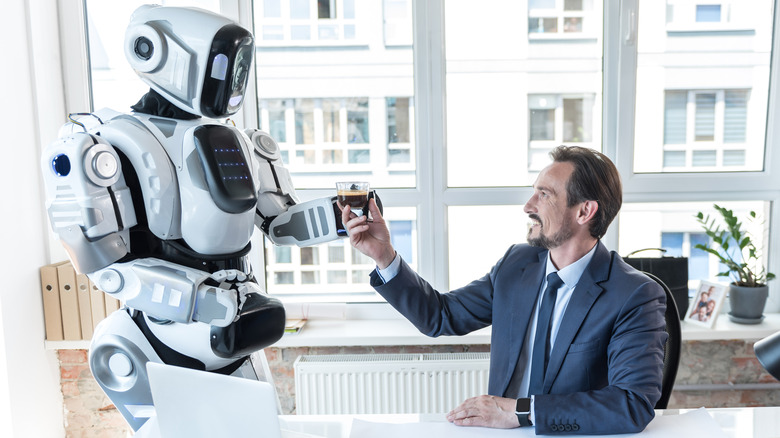Why Scientists Studied How People Carry Cups Of Coffee Without Spilling
No matter how you prep your coffee, there's one crucial step you're likely pulling off without even realizing how impressive it is. When your steaming cup of joe is ready, you or whoever's delivering it then has to carry that mug of hot liquid to wherever you're going to drink it. That stuff could burn you! It's amazing so many of us humans are able to pull this off on a daily basis without spilling. But how do we do it?
Scientists aren't exactly sure, according to Food & Wine. Such a feat takes a lot of coordination from the arm holding it steady, the legs propelling you forward, and the brain giving commands. A lot of those movements are understood, at least somewhat, but not to the extent that you could perfectly explain and replicate them in another form. Arizona State University's electrical engineering professor, Ying-Cheng Lai, puts it well: "While humans possess a natural, or gifted, ability to interact with complex objects, our understanding of those interactions — especially at a quantitative level, is next to zero." So, ASU's School of Electrical, Computer, and Energy Engineering is researching the topic. Aside from curiosity, is there a reason they care so much?
Building better robots
The resulting paper, Synchronous Transition in Complex Object Control, may not sound very culinary, but it gets at something deeply human. Machines can be good at many things; they're great at computing and excel at playing chess, per Time. Plus, they can even convince humans that they're also people (via BBC News). Yet, there are some things artificial intelligence is still worse at than us. Ever wonder why CAPTCHA is asking you to click all squares with breakfast foods in them? That's because computers aren't as good at qualitatively interpreting visual info as we are, according to Google. Apparently, they're not as skilled at carrying cups of coffee, either (via Food & Wine).
Things get a bit technical at this point, but the study found that people use two different methods for safely transporting hot coffee. The first method is the person moving the cup and liquid with the same general momentum. The second method is managing the different motions of the cup and the liquid; it's controlled chaos. The most mind-blowing part of this? Most humans expertly transition between these two modes with ease.
We're not training robotic baristas, at least not yet. Still, the point is to study how robots can replicate complex human skills we often perform second nature. The thing is, food is such an integral part of the human experience that even the transportation of coffee cups holds clues for the future of tech. Now that's food for thought!

